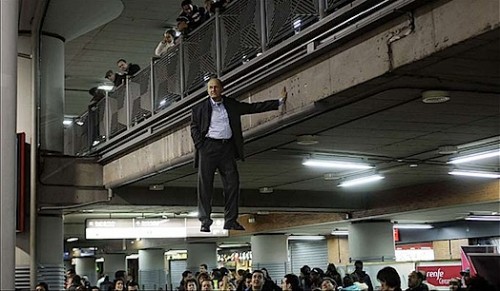
"Louis Vuitton watermelon slice" lollipop by Massimo Gammacurta
• Misquoting Voltaire: It turns out the famed French philosopher never said, "I disagree with what you have to say, but I will defend to the death your right to say it."
• Excellent: 27 visualizations and infographics to understanding the financial crisis. Via Proximity.
• Marilyn Minter's latest lip-goo video installation.
• "Anti-globalization activists Attac distributed 150,000 fake copies of Die Zeit, Germany’s largest weekly newspaper. Headlines present reports the group said it thinks can become reality within 13 months, from nationalized banks to agreement among global leaders."
• How an African-American in the White House plays in Russian advertising: "Chocolate in Vanilla."
• Think twice about getting Red Stripe beer to sponsor your art opening: Boycott Jamaica says rights activists have dubbed the island the "most homophobic place on earth."
• RIP: Photographer Helen Levitt
• Video: 8 Million Stories, 2009 by David Ellis, in which he and his crew "discovered how to precisely control the player-piano solenoid systems that automate the recycled garbage in their work."
• Bauhaus B&B: Famed art/design school in Dessau opens up student quarters for tourist lodging.
• A Seattle crosswalk that lights up when you set foot on it.
• Kid's rooftop weiner drawing viewable from space.







.jpg)














